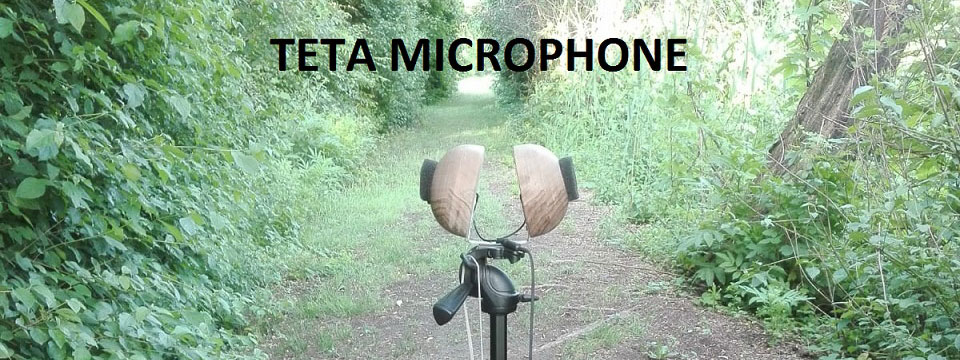Analog Tape Recording Vs. Digital Recording
This recording clearly highlights the problem of the background noise caused by the magnetic tape hiss, completely solved with the advent of digital recording. From 2’07” begins the digital stereo recording performed using an Olympus LS5 and Parabola HiSound stereo with a disc of 53 cm; the initial part instead is of April 1986 recorded with a cassette stereo recorder Sony WM-D6, parabola in fiberglass Rochè 53 cm and a Sony dynamic microphone.
Lessinia Soundscape
This entry has been awarded runner up in the Habitat class of the 2012 WSRS Wildlife Sound Recording Society sound competition.
This is a file that I recorded on May 28, 2012 in Italy, in the mountains near Verona, Lessinia, at 1400 meters above sea level. The soundscape is very angle limited because captured with a parabola stereo using a Telinga Universal, were inside I placed a DIY 3+3 parallel connected EM 172 Primo Stereo microphones.
No processing was done in post production.
The species recognizable are: Turdus viscivorus, Parus ater, Phoenicurus phoenicurus, Cuculus canorus. Captured holding the parabola by hand, no tripod at all.
These the coordinates: 45.659824,11.085538
BEWARE: the Roland R05 is a digital recorder very FRAGILE both for the 3.5 mm jack and the electronic board, much better and stronger is the Sony M10. This is my opinion after using both recorders.
TETA Microphone

Test with a song of Blackcap, for a new stereo microphone system called “TETA”, that allows reception of the stereophonic image to cover fully 360-degree soundscape, a degree that can be varied by rotating the microphone heads to obtain a classic ORTF front stereo image. The capsules are spaced 17 cm from each other.

Looking at the waveform, the difference between the two halves of the file appears clear, with the subject at first positioned decidedly to the left with respect to the microphonic apparatus, then at 3’40” moved a little further to the right than the center.
Here a tested AOM 5024L microphone capsule. This capsule is comparable in size and sound performance to the most known and widespread Primo EM 172 (now EM 272).
The AOL is more sensitive than the Primo capsule, however, in some uses, the lower sensitivity and the higher overload limit of the Primo, 119 dBspl vs 110 dB, allows a larger headroom, e.g. when used in a parabola.
See also: https://www.naturesound.it/2019/08/02/serata-estiva-con-ortotteri/
and: https://www.naturesound.it/2019/08/03/nightingales-duet-song-in-a-marshy-environment/

For more comfortable portability and use on-the-go, I also built a lightweight version, using an EVA block for Yoga. The half sphere shape was obtained by means of a wood lathe and are rotatable to obtain a degree of angolation that can be varied.
Bombina variegata

Yellow-bellied toad

Full moon, midnight, slightly windy weather in Monte Baldo, Valfredda, Verona, Italy, 11 July 2014.
At 1300 meters of altitude, in a small pond, I recorded a chorus of Yellow-bellied toad and European tree frog while an uncommon bat, a Tadarida teniotis, flying over the wetland (see the lines call at about 10 KHz).
In the background is a chorus of field crickets.
I used a DIY parabolic stereo microphone with 3+3 Primo EM172 capsules parallel connected, inside a Telinga parabolic Dish.
I wish to thank Paolo Cugildi for the friendly and warm welcome in Malga Natura and Federico Novelli for the assistance during the recording.
Otus scops – Chorus at dawn
Eurasian Scops

Mole Cricket
Mole Cricket, song recorded using a Telinga Pro5 Twin Mono

Song emitted from the burrow cavity recorded on 22 May 2002 using a parabolic microphone Telinga Twin Mono.
It can be confused with the song of the Green toad, Bufotes viridis
Canto emesso dalla cavità tana registrato il 22 maggio 2002 utilizzando un microfono parabolico Telinga Twin Mono.
Può essere confuso col canto del Rospo smeraldino, Bufotes viridis.

Commenti recenti